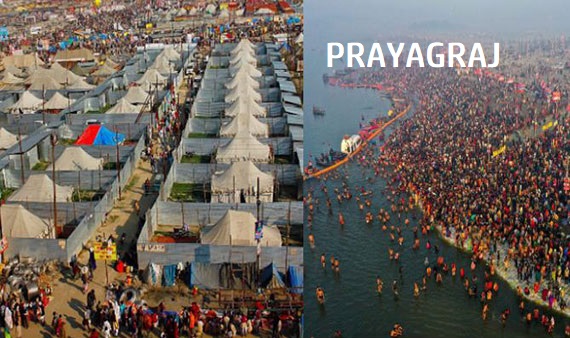2024 GS P5 Solution, PYQs Solution
Q.1. Describe the cultural significance of ‘Prayagraj’ in ancient India.
Prayagraj, anciently known as ‘Prayag’, stands as one of India’s most profound religious and cultural centres. Its significance stems primarily from its unique geography, the sacred Triveni Sangam—the confluence of the rivers Ganga, Yamuna, and the mythical Saraswati.
- Symbol of Unity: The confluence of rivers symbolized the unity of diverse spiritual traditions in India. The confluence is revered in ancient scriptures, including the Rigveda, and is considered a prime Tirtha (pilgrimage site).
- Centre of Pilgrimage: It is the site of the Kumbh Mela, the world’s largest religious gathering, which is inscribed on UNESCO’s list of Intangible Cultural Heritage.
- Educational and Spiritual Centre: Hosted many ashrams and hermitages of sages like Bharadwaja and Dattatreya, making it a hub of Vedic learning.
- The Prayagraj Pillar (Allahabad Pillar) is a monument of immense historical significance. It contains the edicts of Ashoka, demonstrating its importance in the Mauryan period.
- More importantly, the pillar also bears the Prayaga Prashasti, a prashasti (eulogy) for the Gupta emperor Samudragupta, composed by his court poet Harishena. This inscription is a cornerstone of Gupta history.
From being a Vedic spiritual hub to a strategic administrative centre for empires, Prayagraj’s cultural significance is foundational to Indian civilization. In essence, Prayagraj stood as a spiritual, cultural, and intellectual nucleus of ancient India, embodying the essence of sacred geography and civilizational continuity.


